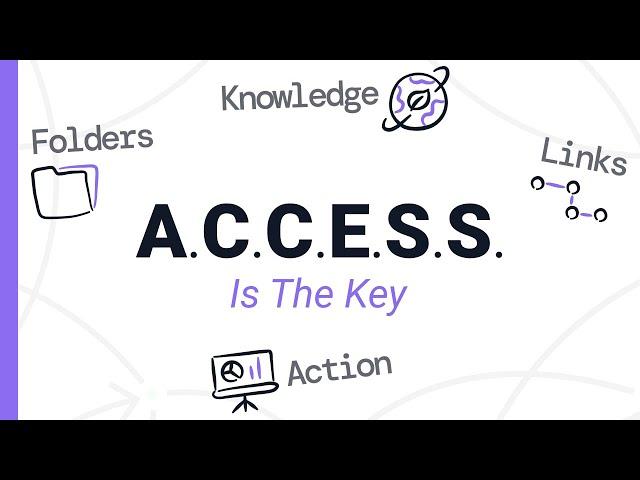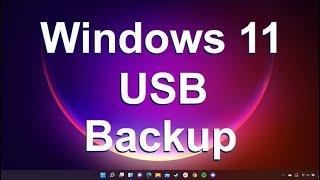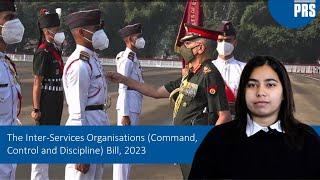
Folders or Links? The key to both is A.C.C.E.S.S.
🔆 Free Weekly Creative Productivity Insights: https://www.linkingyourthinking.com/newsletter/yt
🚀 MASTER OBSIDIAN: https://www.linkingyourthinking.com/obsidian-flight-school
🗺 MASTER KNOWLEDGE: https://linkingyourthinking.com
✨ DOWNLOAD THE FREE LYT KIT: https://www.linkingyourthinking.com/myideaverse/enter
📚 MASTER READING: https://www.linkingyourthinking.com/how-to-work-a-book
📺 SUBSCRIBE TO THIS CHANNEL » https://www.youtube.com/channel/UC85D7ERwhke7wVqskV_DZUA?sub_confirmation=1
00:00 - Introduction
01:48 - The emphasis of knowledge management systems
06:46 - Introducing ACCESS
07:05 - Atlas
07:37 - Calendar
08:03 - Cards
08:50 - Extras
09:07 - Sources
10:01 - Spaces
12:29 - Access in action
18:34 - Spaces in action
23:24 - Conclusion
24:57 - Outro
🐦 TWEET: https://twitter.com/NickMilo
📖 READ: https://medium.com/@nickmilo22/my-pkm-story-3763985b7a3e
🎬 LEARN OBSIDIAN: https://youtu.be/QgbLb6QCK88
🗿 DOWNLOAD OBSIDIAN: https://obsidian.md/
📩 EMAIL: [email protected]
🏷 TAGS: #Obsidian #obsidianapp #Obsidiannotetakingapp #LinkingYourThinking
Тэги:
#The_ACCESS_Approach #Folders_or_Links? #nick_milo_obsidian #nick_milo_linking_your_thinking #folders_vs_links #linking_your_thinking_obsidian #linking_your_thinking_workshop #Who_is_Nick_Milo #links_vs_folders #lyt_workshop #nick_lyt_workshop #folders #obsidian_links_vs_tags #linking_notes_in_obsidian #lyt_kit_6 #lyt_kit_obsidian #nick_milo_lyt_kit #LYT_Kit #Download_LYT_Kit #Obsidian_lyt_kit #should_you_use_links_or_folders?Комментарии:

What exactly Areas folder is for?
Ответить
I can already do this with PARA and it be more simple and easier to manage (less moving parts).
Ответить
Curious to hear, whoever implement this - how are you doing? How would you compare this to PARA?
Ответить
Thank you for your knowledge.
Now I only have the problem that I want to reorganize my vault according to this system.
Are there any tips for reorganizing?
This presents me with a big task AND CHALLENGE 😢😊

"We shall call you A.C.C.E.S.S., the God of Balance you shall be" - Rush 'Hemispheres' (sort of), as C.G.Y.N.U.S. is one hell of an anacronym to match the concept.) When balance is struck between the fractured world of the split hemispheres of Left vs. Right brain thinking. The Holistic, Creative, Right brain (linking) vs. Linear, Logical, Orderly Left Brain (Folders). The first link I made watching, anyway. Great Video Nick. Thank you.
Ответить
It's amazing to me how much love and effort you put into that video. Thank you, it's going to help me a Lot!!
Ответить
Can't justify the cost of the LYT workshop, but can I just say that LYT and this ACCESS methodology is the best pkm concept I've come across! Thank you Nick!
Ответить
I randomly came across this while looking into Obsidian. Access sounds like a brilliant way to organize information and it's quite impressive, but it gave me headaches at some point. My brain wasn't ready for it, I guess.
Ответить
I can't download Nick Milo's LYT kit. On the website, it's saying "Subscribe to Download" but the subscribe button is not working.
Ответить
Can someone please give examples of what contents go on ATLAS? All that I think about and be in CARDS, thank you in advance!
Ответить
Nick, thanks for your awesome contributions to PKM through obsidian. Your ideas have been so helpful. You are definitely a giant in this space.
Ответить
A nice approach for zettelkasten in Obsidian. But The brain software had all this for more than 25 year in their solution. Visualising thoughts, allowing files and directory structures linked. A function it has is the wandering function.
Ответить
I like the entire idea on paper, but when I saw it in action, it really didn't stick with me. Either its Obsidian or the system, I am not sure, it looked very chaotic and busy
Ответить
Still waiting for the Link he promised about ppv. He didn't say what it stands for so it's very hard to Google for it
Ответить
New to Obsidian, but I think folders could just be a note with a list of links, then you could use a template for folder structures that should be the same, like the MAPS pattern. Folders are easy to sort though. Ultimately I really want a powerful way to query the link graphs that would allow stuff like sorting.
Ответить
imo, too complicated. ymmd
Ответить
Hi Nick, i follow you from Italy and I love your videos.
Could you please make a video in which you explane how to use Spaces more in depth? It would be awesome :) Thank you!

Thank you Nick for all you hard work and the free LYT starter kit. I'm moving over from August Bradleys PPV in Notion and researching the best way to lay out a folder structure. I like your acronym A.C.C.E.S.S - Currently I'm using Notelab(Encounters), MOC (Atlas), Knowledge (Cards), Toolbox (Extras), Vaults (Sources) Spaces and Journal. I was a little confused by Cards and Spaces at first. Still on the fence about using Knowledge. Would Cards be lke a Wikipedia of Information about subjects (i.e Powershell, Windows) and Spaces be the Projects and Areas of your life you're working on like (My Newsletters, My Website, My Blogs, etc)
Ответить
What is PPV?
Ответить
🤯
Ответить
This is genius. I’m a knowledge worker- actually a meta-knowledge worker. I’m a director of legal operations and organizational KM is where I started that journey. I love Obsidian’s map/graph data structure. I think this hybrid is going to be capable of being applied both personally and organizationally.
Ответить
The cards folder is the one where zettelkasten ideas would go into?
Ответить
Something I don't really like about it; why does it always need to b.u.i.l.d a word that you can remember? Because of that, the folders have strange bizarre names… Your 'Atlas' is my Framework, your 'Calendar' are yearly folders (2022, 2023…), haven't understood your cards yet, I keep watching :D 'Extras' are my Assets, 'Sources' is literally called External in my vault. Spaces is interesting – for me they do have their own folder and link directly from the core (core is me, 'marius') there's my personal brand and brands I want to create. And one big Projects Area.
Interesting how common this already is… we just use slightly different names and a little bit of a different workflow. Otherwise, Mr. Link :D I do really like your videos <3 Love and stuff bro

I think this is too complicated. I consume, take first pass notes, then iterate on these notes, then publish them. That’s it.
My sources turn into atomic notes. My original source note becomes a top level file with all the forward links to my atomic notes.
Tags control my spaces. Folders don’t lend well to renaming. I only use folders on static things like pipeline steps. I have four folders start , middle, end, publish, meta

@Linking Your Thinking subscribed. Not because I’m fully persuaded ACCESS (double usage of two letters in an acronym makes it harder to remember) makes the most sense yet compared to PARA (which I’ve bought the book and mostly read it) but what I was fascinated the most by their absence is using tags in the system.
Here is my thinking about this, having been a computer geek for over 40 years now: unless I’m mistaken (I’ve been using Obsidian barely getting started) the links are attached to folders, so if you find a need to move notes to different folders, you break links to whatever it is you move: I don’t want that, that’s too much friction. It imposes a need to get it in the “correct” folder the first time. It also means you need to think consciously about folders, probably more than you should ever do for a process that is meant to rely on a bit of chaos bottom-up order for creating unplanned creative thoughts and discoveries.
I’m in tech for a living, and I also create and play-test card and board games. I’m also writing a book related to what I do for a living, as well as I’m seriously considering writing a book about card and board game designs using my own existing games. In neither PARA or ACCESS do those fit neatly. In all those cases of writing, game creation, and research and notes used for the tech-related book, there is a lot of cross-sharing. Taking into account how folders are rather top-down and restrictive, not to mention breaking of links if you have to move things, and the desire to remove all duplication combined with minimizing friction, I would say neither PARA or ACCESS is the right balance, especially in light of the concept of atomic notes.
Yes, I’m suggesting a more zettelkasten note-taking/organizing strategy, that involves structure of file names and/or backlinks to refer to parent notes. Why? Because as soon as you allow for editing of established notes, it creates consistency issues, as well as erasing history of how things came about.
Consider a project A, which uses B, C, D, E. Where are those things located? Well, if you know a priori that the project uses those things or at least is intended to use those things, create that in the project note that lists the objective of the project and the known knowns, that you assess as of that time. Not all projects use what you start out with, however: it’d be nice to have that documented.
The main project card would have:
1. The overall deadline
2. Known resources
3. Budgetary concerns
4. Absolute large requirements
All those things would then be general guidelines and guesses, because you can’t know from the start.
But this note would never be changed.
Instead, like zettelkasten uses (from my understanding) notes with backlinks (or at least suggested as such due to filenames that have a path indicating sub divisions) that refine or have comments about the higher order cards, I’ve considered an appropriate name for these are Augmentation Notes. Why? They add to the note they’re in the virtual subfolder of, and each of these Augmentation Notes can have augmentation notes pointing to them as well.
Here is where the real magic comes in: other than augmenting for each of the higher order levels for schedule, next step to take, resources to get or are used, etc. is then another augmentation note points back to something within that project. Where is that augmentation note from? It may very well reference somewhere else in your notes, including other projects, or research areas. These augmentation notes can readily have multiple tags in them to mention they’re using in a given project, but perhaps they’re linked directly to this original project: this gives a nice breadcrumb trail to understand how, when and why things got created, and via search, shows nicely how they’re all tied together without confusing the history. All notes only need to be created as though they’re write-once notes in notecard format as if you used a magic marker and filled up the whole notecard in one step. The structure and the naming of the files document where they belong, including to multiple things at one time, but only one backlink to the originating project or source exists.
All other folders exist for things that aren’t yet linked into the system (notes being processed from intake) or confidential things you can’t afford to not secure better, such as personal contacts, things that make sense to restrict via whatever security system.
Another aspect of the Augmentation Notes strategy: a number of things may best be addressed via templates, but not everything makes sense to have an all-encompassing template for all the questions or thoughts: create simple templates with minimal interfaces (borrowing software design terminology here) that are sufficient to address the augmentation. For nutrition, there are a certain number of questions that make sense: for code, there is a completely different set of questions that make sense. If the templates with questions are likely to not be answered atomically with all questions answered, perhaps that’s not the right template to use. But, with Augmentation Notes, and backlinking to higher level notes, you can always add to them, perhaps adding clarification, or corrections.
Your thoughts?

I have the LYT Kit 6.0, in which you have 2 sub-folders in + Encounters: Cooling Pad and Unsorted. How do you use these?
Ответить
Is a card kinda like a database? Like I want to have a database of movies im watching would that go in Cards
Ответить
Absolutely considering. Apologize for being honest
Ответить
I’m struggling to understand the difference between ATLAS and the MOCs section of a Space
Ответить
I've downloaded the LYT kit from the given link, but the content does not match to the one presented in video. Is there any chance for updated LYT kit?
Ответить
I’ve been struggling to integrate GTD over the past year and a half and recently started combining GTD with PARA but it’s been missing something. I think this is it. This is everything I need!!! Thanks Nick 🎉😊
Ответить
So “Encounters” is like an “in-tray”?
Ответить
Where do you put things when they are no longer relevant? Like a space that closed out, or a project within a space that is completed.
Ответить
Thank you very much for the awesome content, you are very good at transferring what you want to say, thanks
Ответить
Extremely inspirational. To me, it is not about copying the access letter by letter but getting the concept behind the combined power of both folders and links. I will translate the folder idea into namespaces in LogSeq and see what structure will emerge. Thank you for this unique perspective, Nick!
Ответить
Hello,
Thanks for the videos !
I feel like "atlas" and "area" are quite similar, as well as "support notes" and "sources" (or "extra") ; could you explain me why it is different ?
Thanks !

Why I can't see the back and forth arrow in this beautiful kit? Am I blind?
Ответить
A little unclear on what goes into areas. As a teacher, I have a lot of praxis-related content notes that until now have been in my "cards" folder. But since these are mostly not evergreen notes and they're domain-specific, I figured they'd go better under spaces/work/areas/teaching. Not sure if this is the right call though and would love some input.
Ответить
Awesome video. Thank you so much. I’m very new to obsidian and trying to build my second brain is extremely daunting but your videos really help.
Ответить
you can do all these things with both links, tags and MOCs. What wasn't clear to me from this video was how this actually differentiates or adds anything other then having to add another organisational task alongside current links and tags.
Ответить
behind any link they are folders
Ответить
Absolutely beautiful work ! Thank you for sharing.
Ответить
I really appreciate the effort in trying to "balance" the forces you mention, but after seeing the video I don't see it as a huge solution. You just create a folder and subfolder structure with fancy acronyms with either adding stand-alone notes or MOCs. So you just tidy up the notes into folders and improve browsing capabilities. Even realizing you are using a mock example, in the entire video you didn't make examples of using intensively links or examples of how this system leads into action. I really would like more examples on usability, because the idea is good.
Ответить
This is brilliant! I’ve struggled for a few years now to find the best way to integrate these instruments and somehow there is always a piece that doesn’t quite fit. This solves that.
Difficulty now is migration…where is the line of diminishing returns for taking time to migrate old knowledge to a new system.
Thanks for making this content free! I hope to be able to attend a workshop one day.

Great video, Nick! I found that I came to a similar conclusion when building out my vault. I recently did a video on "Should you use PARA in Obsidian?," and someone mentioned in the comments about your system. I am thankful they did. Have a great day!
Ответить


![Loading TV - Teaser: Programação (2° Versão) [2020] Loading TV - Teaser: Programação (2° Versão) [2020]](https://invideo.cc/img/upload/NDZZSTlyUFNoM2o.jpg)


![2024 Dancehall, Shatta, Basshall Crazy Mix [TeeJay, Byron Messia, Dutty Money] 2024 Dancehall, Shatta, Basshall Crazy Mix [TeeJay, Byron Messia, Dutty Money]](https://invideo.cc/img/upload/OHNzWHFiMUxPcGI.jpg)



















